|
Pelican Bay Lumber Company |
|
|
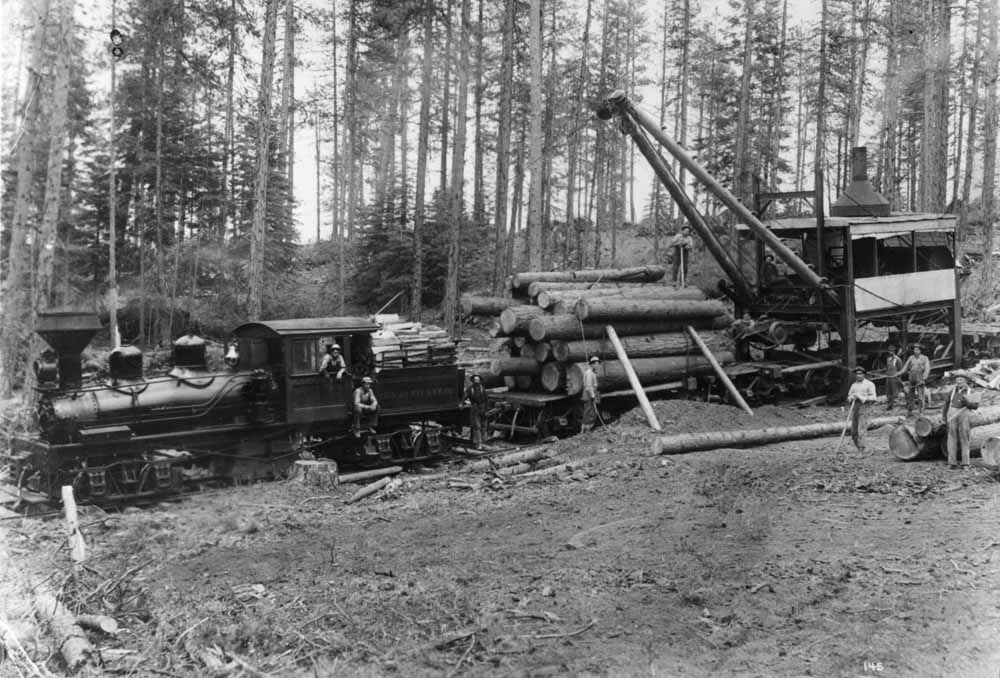 |
|
A Pelican Bay Lumber Shay and McGiffert loader at work in the early years. Jerry Lamper collection.
|
|
|
|
History Businessmen H.D. Moretenson, George D. Haupton, and W.P. Johnson secured a large timber sale on the Crater Lake National Forest in 1911. The three promptly incorporated the Pelican Bay Lumber Company, which built a sawmill on the eastern shore of Klamath Lake not far north of Klamath Falls. Concurrently the company purchased a Shay locomotive, ten Russell log cars, and a McGiffert loader which they barged to the north end of the lake. The company had to dredge a canal a mile inland through a marshy area on the edge of the lake, where construction of a logging railroad west into the timber sale commenced. Between 1911 and 1919 Pelican Bay built a network of spurs through the timber sale, with the logs rafted across the lake to their mill for processing. A second U.S. Forest Service timber sale increased the scope and volume of that operation. In 1915, Pelican Bay secured another large timber sale, this one on the Klamath Indian Reservation northwest of Kirk. When it became apparent that the Southern Pacific would not build anything beyond Kirk anytime soon the company started construction on a new rail line running slightly west of due north from Kirk to reach the timber. The mainline eventually reached 26 miles in length, with a network of spurs built through the timber. A second Shay and a 2-6-2 purchased new from Alco supplemented the original Shay. The prairie typically spent days working the log spurs, spotting empties and pulling loads, and then nights taking the loads down to Kirk and returning north with the empty cars, while one of the Shays worked as a camp switcher and the other powered the construction trains engaged in the never ending task of building new logging spurs and scrapping out old ones. The 1926 Directory of the Lumber Industry described the company's operations as follows: "Pelican Bay Lumber Co., Klamath Falls; camp post office, Kirk; 1 side; daily output, 350M; 2 donkey engines; 1 high lead; 1 Clyde skidder; 2 logging tractors; commissary; machine ship; 350 men; manager, H.D. Mortenson; superintendant, J.C. Johnston; purchasing agent, R.R. Riley; master mechanic, J.H. Fitzpatrick; 38 miles s.g. track; 54-62 lb. rail; 2 geared locomotives; 1 direct locomotive; locomotive fuel, oil; air on equipment; maximum grade, 4-1/2 per cent; 24 sets logging trucks; 10 flat cars; 1 locomotive crane; output transported by Southern Pacific Railroad." Pelican Bay started looking for new timber sources as the operations near Kirk neared the end of the available resource, and in the late 1920s the company purchased two large tracts in the country south of Bly, Oregon. Grading for a logging railroad started in 1928, before the Oregon, California & Eastern had even completed its extension into the town. The transition from the line north of Kirk to the area south of Bly happened through 1929, and by the end of that year the company fully closed out its operations north of Kirk and scrapped out that railroad. The company again found itself approaching the end of its timber supply in the middle 1930s, and in 1936 the company acquired the Sycan Unit of timber on the Klamath Indian Reservation from the Shaw-Bertram Lumber Company, which had succumbled to the Depression in 1934. Operations out of Bly ended by around 1937, by which time Pelican Bay had new logging camps operating in the new timber. Between 1936 and 1944 Pelican Bay built several short railroads off of the Lamm Lumber Company railroad, which hauled the Pelican Bay logs to the Southern Pacific connection at Chinchalo for delivery to the mill. This would prove to be the last rail show operated by the Pelican Bay, which used trucks to haul timber out of additional smaller timber sales up until the time the complany shut its mill down and went out of business in 1947. |
|
|
Maps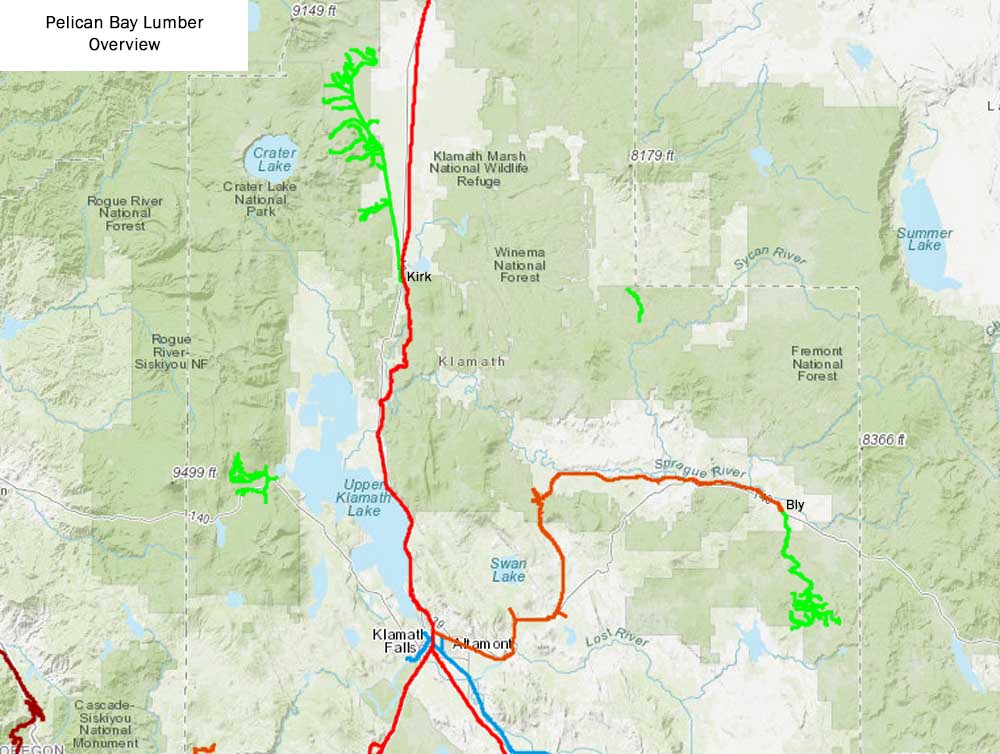 |
|
Overview map of the Pelican Bay Lumber operations.
|
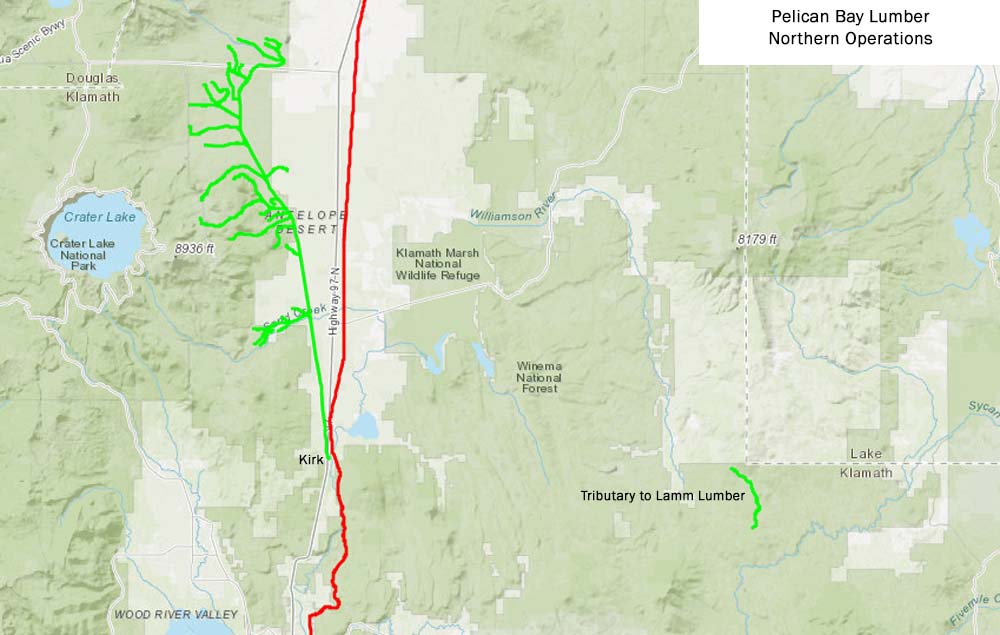 |
|
Detail map of Pelican Bay's northern operations.
|
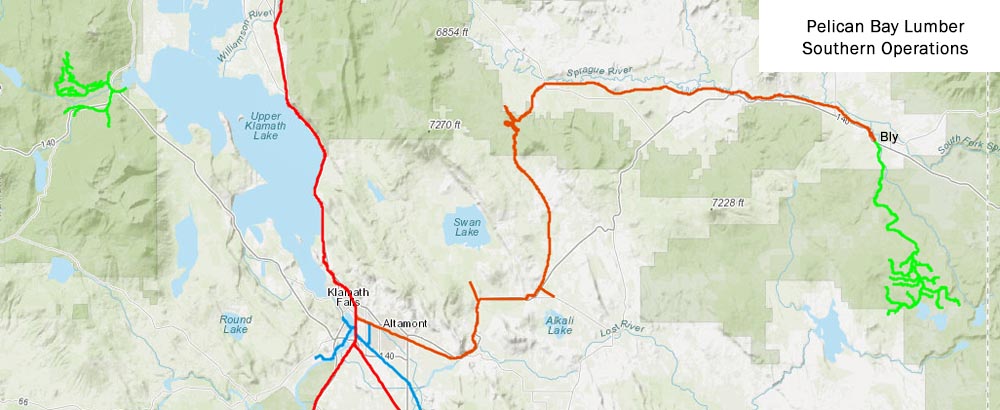 |
|
Detail map of Pelican Bay's southern operations.
|
|
|
|
Locomotive Roster ?- Climax 2-Truck, c/n 239, Built 1900. Weight 35 tons. Built as Phoenix Logging Company, but diverted to Simpson Logging Company #1, Shelton, WA; Burned in forest fire and sold to Columbia & Nehalem Valley Railroad #1, Columbia City, OR, 1903; To Peninsula Log Company, Columbia City, OR, 1906; to Pelican Bay Lumber Company (Klamath Logging & Timber Company), Odessa, OR, circa 1916; Wrecked and scrapped. 1- Lima 2-Truck Shay, c/n 2410, Built 1911. Cyliners 8x10, Drivers 27.5", Tractive Effort 12,850 lbs., Weight 28 tons. Acquired new; to Shaw-Bertram Lumber #1, Klamath Falls, OR; to California Oregon Power Company, Thrall, CA; to Independence Foundry Company 1929; to Clackamus Fir Lumber Company, Beaver Creek, OR; to Molalla Lumber Company, Beaver Creek, OR, 1929. 2- Lima 2-Truck Shay, c/n 2722, Built 1913. Cyliners 10x12, Drivers 29.5", Tractive Effort 16,900 lbs., Weight 42 tons. Acquired new; to Lamm Lumber Company #1, Modoc Point, OR. Scrapped 1951. 3- Alco/Cooke 2-6-2, c/n 62515, Built 1920. Drivers 48", Tractive Effort 29,900 lbs., Weight 72 tons. Acquired new; to Lamm Lumber Company #4; to Ventura County Railway #3, Ventura, CA, 1944. 28- Lima 2-Truck Shay, c/n 2268, Built 1910. Cyliners 12x12, Drivers 36", Tractive Effort 23,850 lbs., Weight 60 tons. Built new as The Pacific Lumber Company #28, Scotia, CA; to Pelican Bay Lumber Company #28; to Pelican Pine Manufacturing Company; Scrapped at Bly. |
|
|
|
Photos |
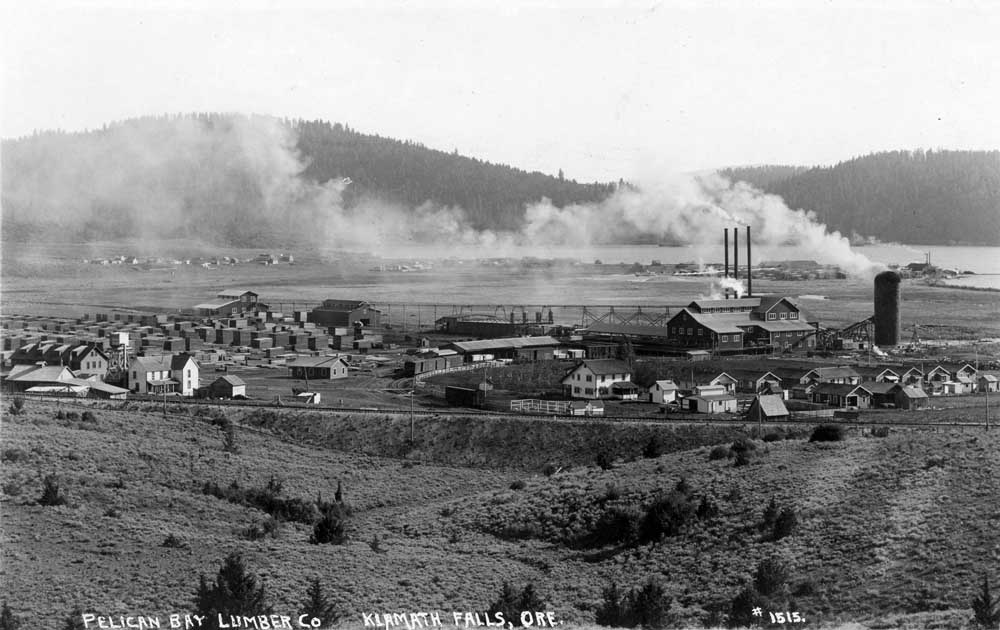 |
|
An overview of the Pelican Bay Lumber Company sawmill.
|
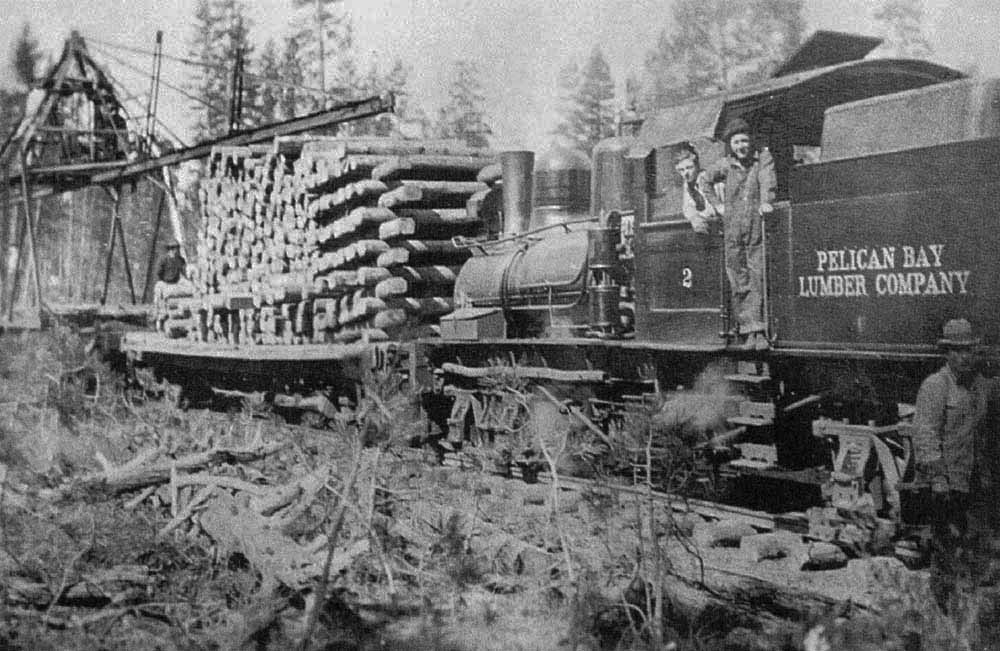 |
|
Pelican Bay Shay #2 working with a tracklayer.
|
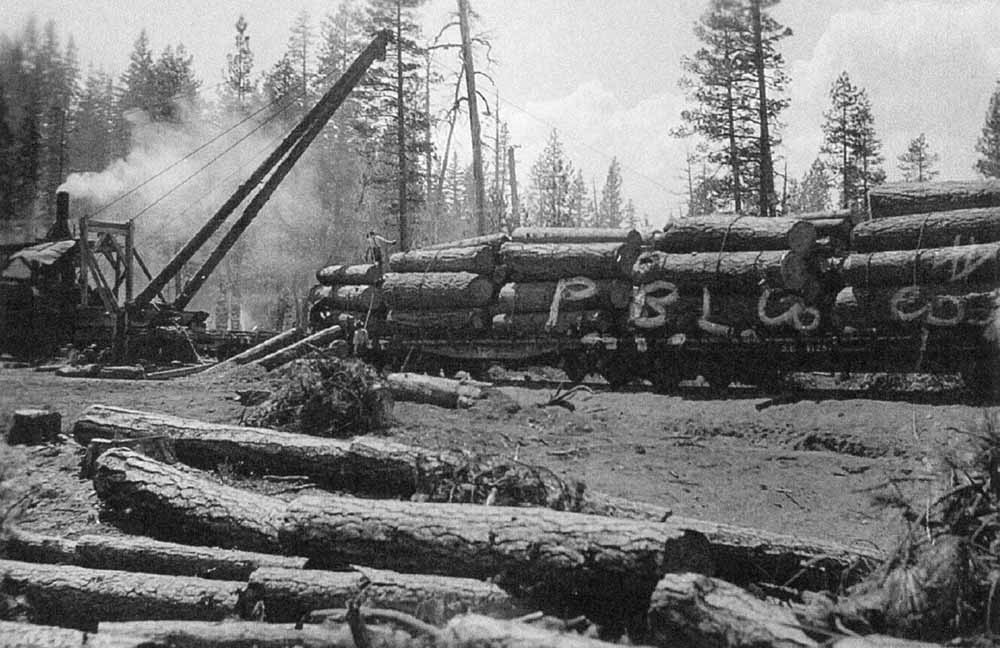 |
|
Loading logs at a Pelican Bay landing.
|
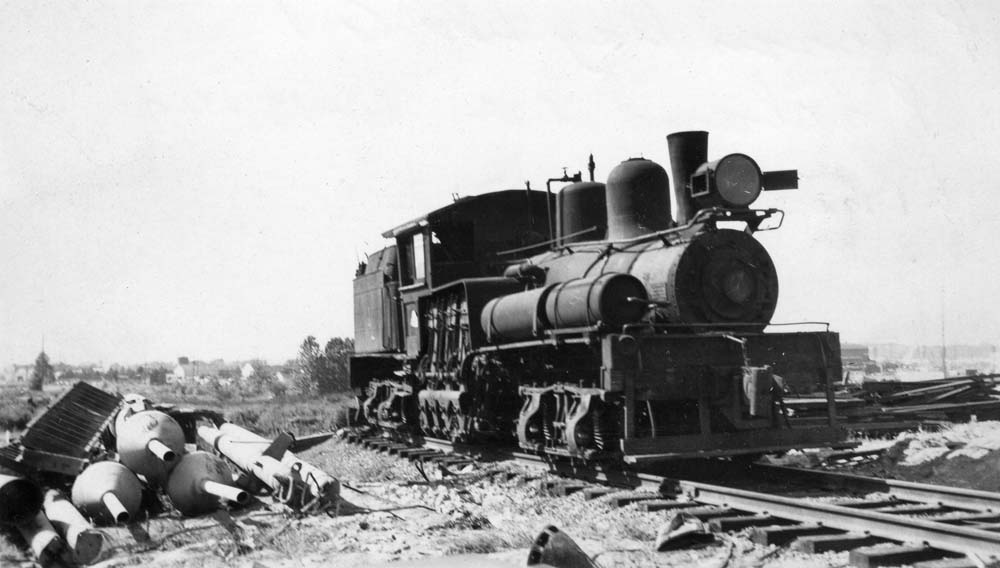 |
|
Pelican Bay Shay #1 in Portland on 15 June 1949. Ivan Saunders photo.
|
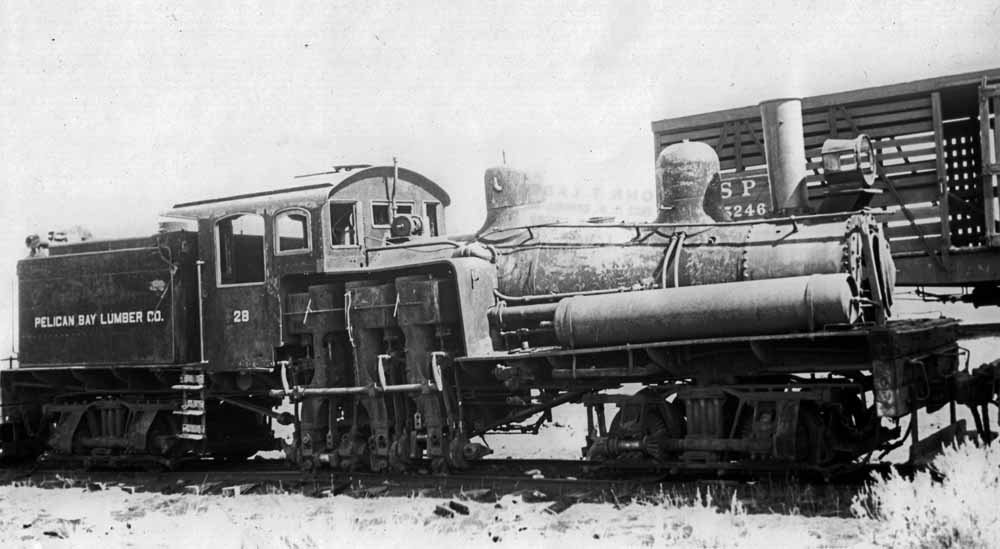
|
|
Pelican Bay Shay #28 in Klamath Falls on 6 April 1947. John T. Labbe Collection of Logging and Railroad Photographs, 1892-2010, Washington State Archives,
Digital Archives, http://www.digitalarchives.wa.gov.
|
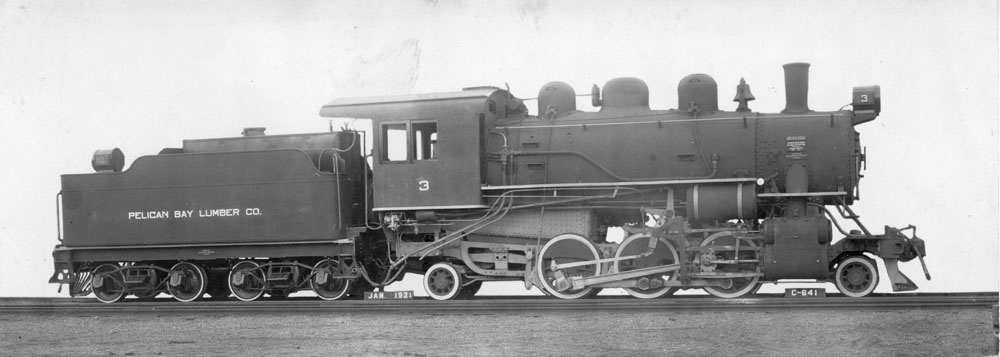 |
|
Front of the specification card for the Pelican Bay #3.
|
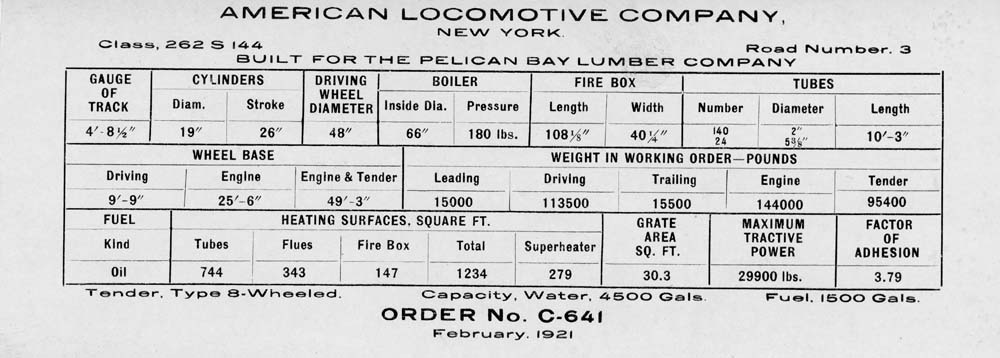 |
|
The back side of the specification card for the Pelican Bay #3.
|
|
|